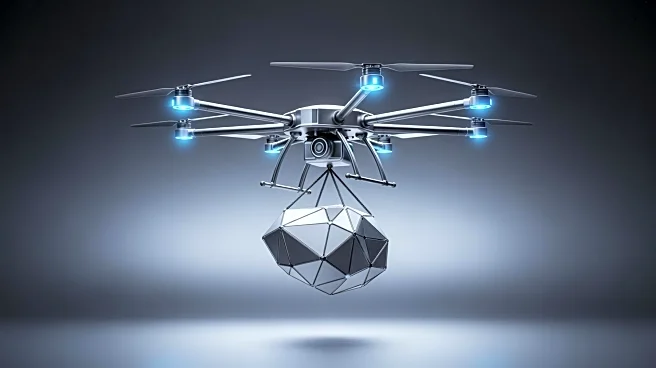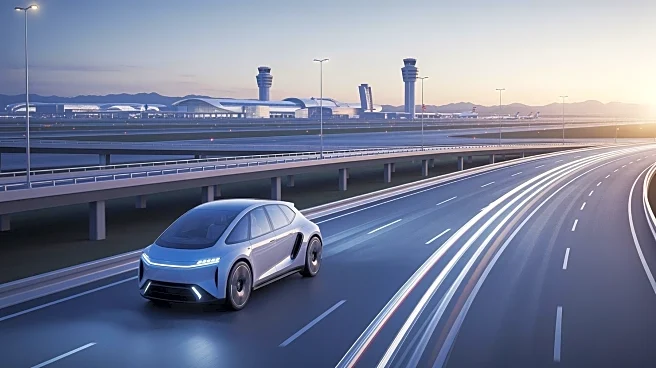What's Happening?
The DARPA Lift Challenge is focused on developing drones capable of carrying payloads significantly heavier than their own weight, aiming to overcome the current limitations of multirotor drones. These
drones typically have a payload-to-weight ratio of 1:1 or less, but the challenge seeks designs that can carry payloads more than four times their weight. This initiative could revolutionize drone applications across various sectors, enhancing their utility in logistics, delivery, and other industries.
Why It's Important?
Advancements in heavy lift drone technology could have substantial implications for logistics and transportation, potentially reducing costs and increasing efficiency in cargo delivery. By enabling drones to carry heavier loads, industries such as e-commerce, emergency response, and construction could benefit from faster and more flexible delivery options. The challenge also underscores the importance of innovation in maintaining U.S. leadership in drone technology, which is critical for both commercial and defense applications.
What's Next?
As the DARPA Lift Challenge progresses, participating teams will likely focus on overcoming technical hurdles related to drone design, power efficiency, and stability. Successful prototypes could lead to commercial partnerships and further research funding, accelerating the deployment of heavy lift drones in real-world scenarios. The challenge may also inspire new regulatory frameworks to ensure safe and effective integration of these drones into existing airspace systems.











